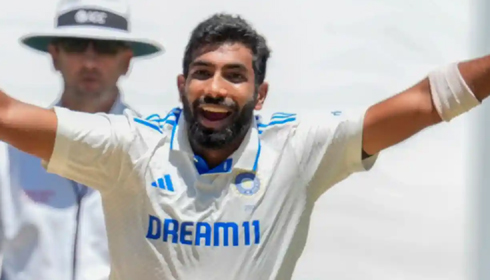
Bumrah's Injury Nightmare: Will India's Star Bowler Recover?
India's cricketing community is once again concerned as Jasprit Bumrah, the star quick bowler, faces uncertainty about his participation in the next Champions Trophy due to a new injury. Bumrah was unable to bowl in the second innings of the fifth Test against Australia due to a back muscle issue. The Indian team and the Board of Control for Cricket in India (BCCI) have not divulged the seriousness of the injury, fuelling suspicions about his fitness.
Bumrah has visited with Rowan Schouten, a surgeon located in New Zealand, sparking speculation about another future surgery. Schouten, who performed surgery on Bumrah in March 2023, has now submitted information to the BCCI's medical team about the bowler's condition. While there has been no official word on whether surgery will be required, the uncertainty emphasises the larger issue of sports injuries, which cut short potential careers.
Injuries have a significant impact on professional sports, with numerous Indian sportsmen suffering setbacks throughout disciplines. Cricket, football, and kabaddi are popular sports in India, but injuries are common, reducing player longevity. According to a 2021 study published in the Indian Journal of Orthopaedics, approximately 60% of India's elite cricketers suffer from musculoskeletal injuries at some point in their careers, with fast bowlers being the most vulnerable. Previous cases, including those of Ashish Nehra, RP Singh, and Zaheer Khan, demonstrate how reoccurring injuries frequently shorten careers or reduce performance on the field.
Beyond cricket, India's lack of effective sports injury management facilities exacerbates the situation. Despite its rich sporting legacy, India lags behind countries such as Australia, England, and even China in terms of specialist sports medicine infrastructure. The country has only a few dedicated sports rehab centres, forcing most players to seek treatment elsewhere. The Indian government's Khelo India project and the development of AIIMS's sports injury centre in New Delhi are positive milestones, but they fall short of meeting professional athletes' expanding needs. Because of the lack of decentralised high-performance medical facilities, even well-funded players such as Bumrah must rely on international experts, highlighting the infrastructure divide.
Bumrah's situation has also reignited the discussion over workload management in cricket. His body was put under tremendous strain after bowling 150 overs in the Australia series, including a Border-Gavaskar Trophy record 32 wickets—more than any other bowler in tournament history. Former cricketer Mohammad Kaif has already expressed concerns about burdening Bumrah with captaincy responsibilities, saying they may jeopardise his physical health.
With the Champions Trophy team selection due on January 12, sources say the selection committee, directed by Ajit Agarkar, intends to include Bumrah in the initial squad while closely monitoring his recuperation. We will find a successor before the February 13 deadline if he fails to restore full fitness. To reduce the risk, the BCCI is considering resting him for the forthcoming England series to give time for recuperation.
Improved infrastructure, recovery methods, and workload control can reduce the severity of sports injuries, an unavoidable part of competitive athletics. For India, investing in world-class sports medicine facilities at home is no longer a luxury but rather a must. Until then, athletes like Bumrah will persist in encountering fitness challenges that a more robust domestic resource could have prevented.